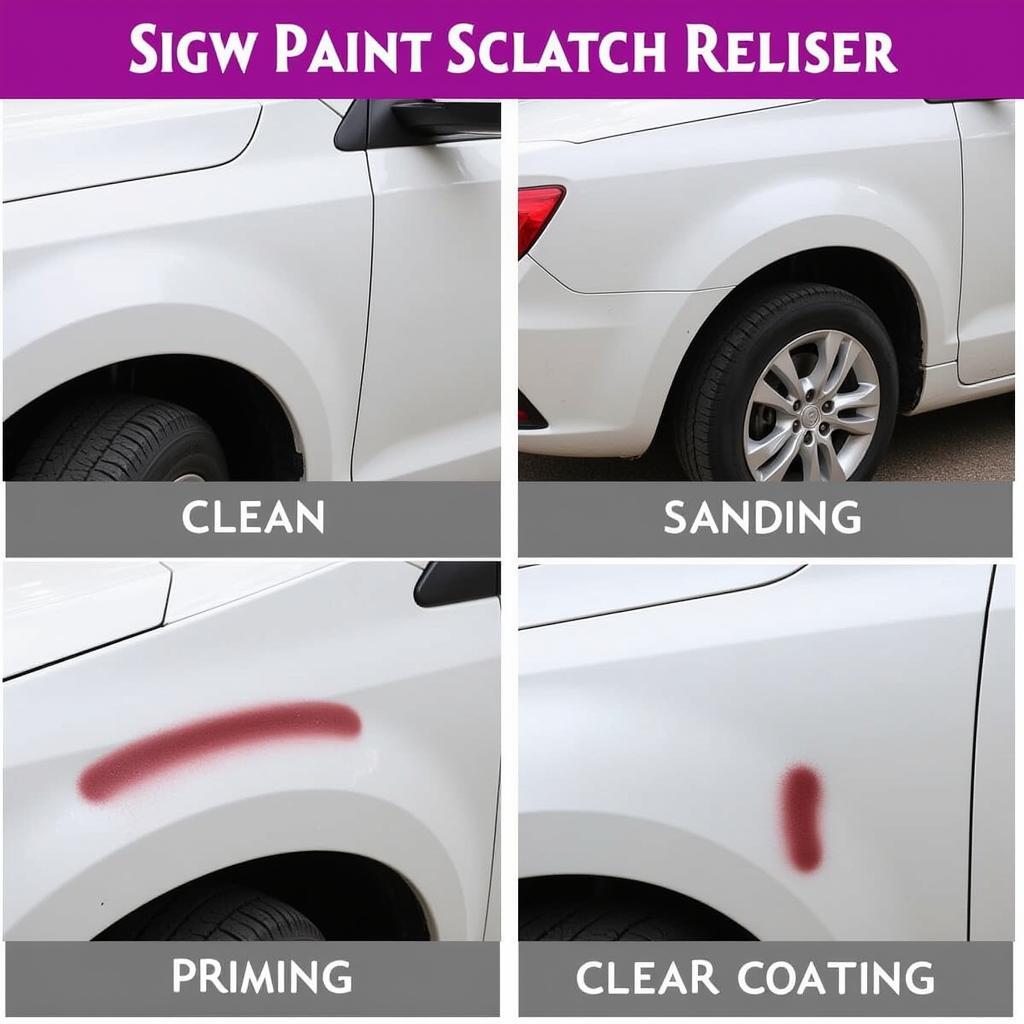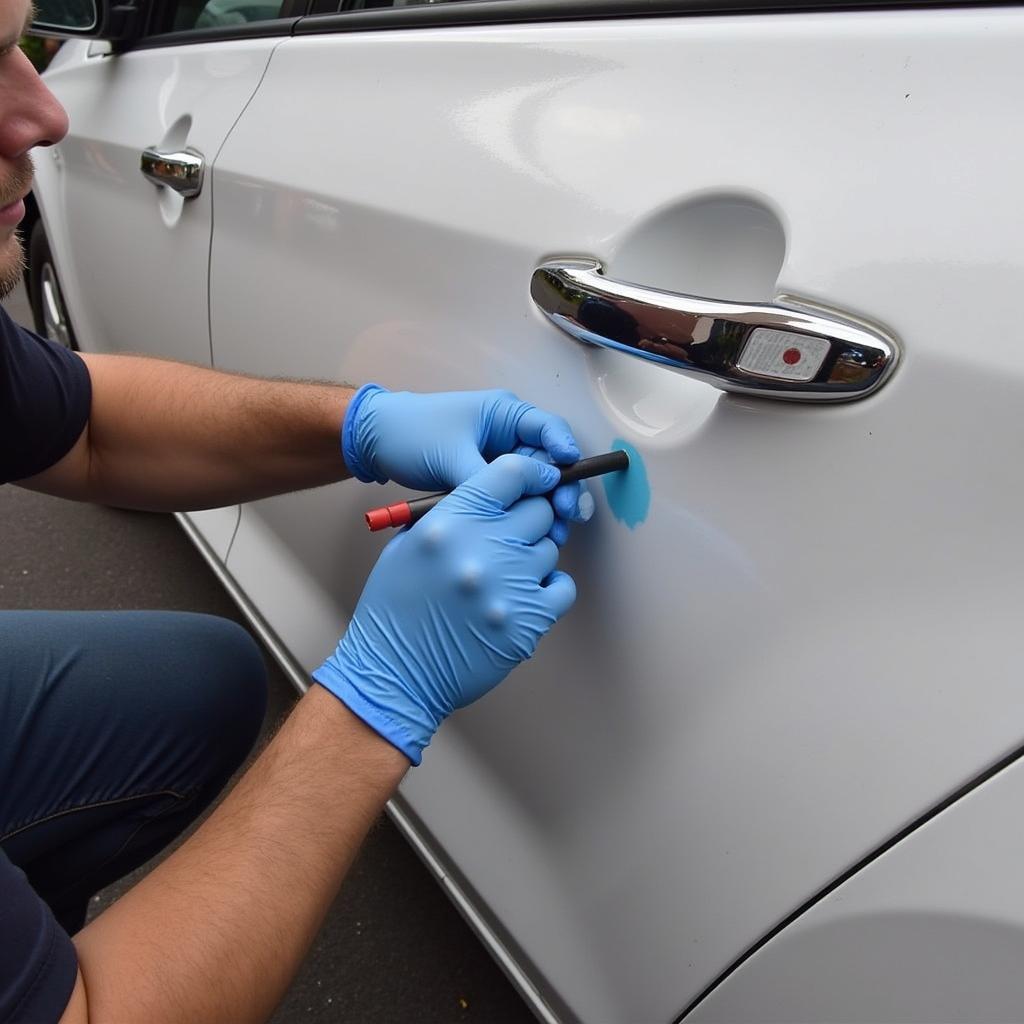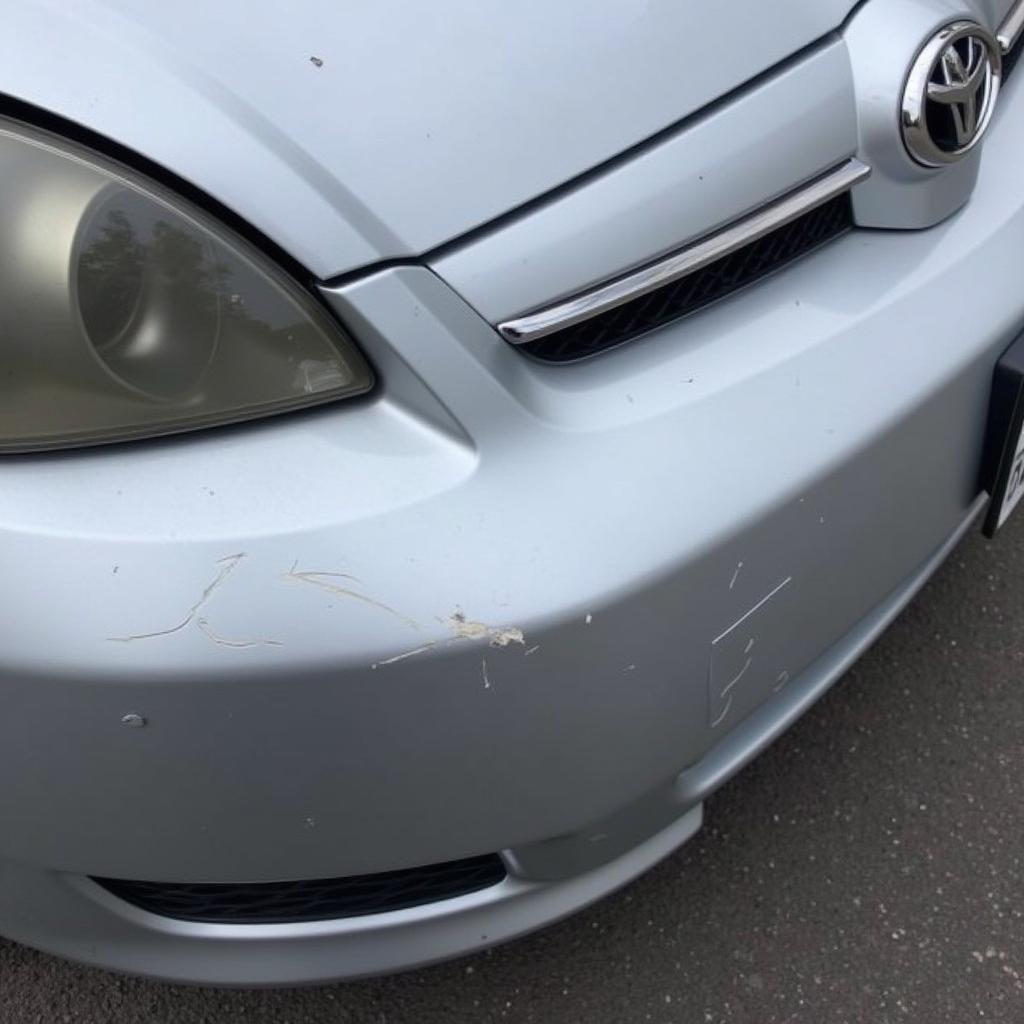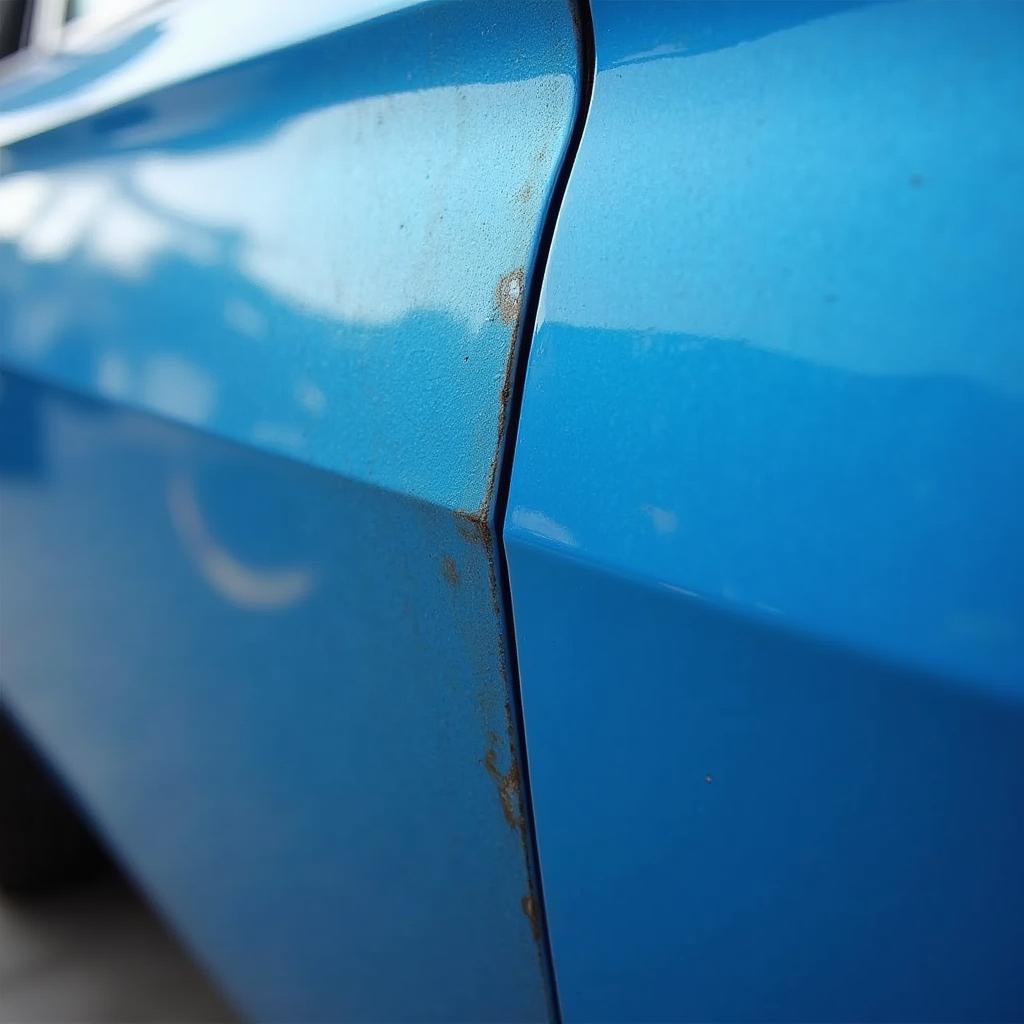
Car Paint Bad Match Example
A car paint bad match can be incredibly frustrating, especially after a fresh paint job. Whether it’s a slight difference in shade or a completely different hue, it’s essential to address the issue for a seamless and professional look. This comprehensive guide will walk you through the steps to effectively repair car paint mismatches, ensuring a flawless finish that restores your car’s aesthetic appeal.
 Car Paint Bad Match Example
Car Paint Bad Match Example
Understanding the Causes of Car Paint Bad Match
Before diving into the repair process, it’s crucial to understand what causes car paint to mismatch. This knowledge helps in choosing the right repair method and avoiding similar issues in the future. Common culprits include:
- Incorrect Paint Mixing: Even a slight variation in the paint formula can lead to noticeable color differences.
- Fading of Original Paint: Exposure to sunlight and environmental factors can cause the original paint to fade, making new paint appear mismatched.
- Improper Application Techniques: Uneven paint application, wrong spray gun settings, or inadequate blending can result in a patchy and mismatched finish.
Repairing a Car Paint Bad Match: Step-by-Step Guide
Repairing a car paint bad match requires a meticulous approach and the right tools and techniques. Here’s a detailed guide to help you achieve a professional-grade finish:
1. Assess the Extent of the Damage:
Carefully examine the mismatched area to determine the severity of the issue. A minor mismatch might require a simple blending technique, while a significant difference in color might necessitate repainting the entire panel.
2. Gather the Necessary Materials:
- Sandpaper (various grits)
- Masking tape and paper
- Automotive primer
- Color-matched car paint
- Automotive clear coat
- Paint thinner
- Spray gun
- Safety equipment (mask, gloves, goggles)
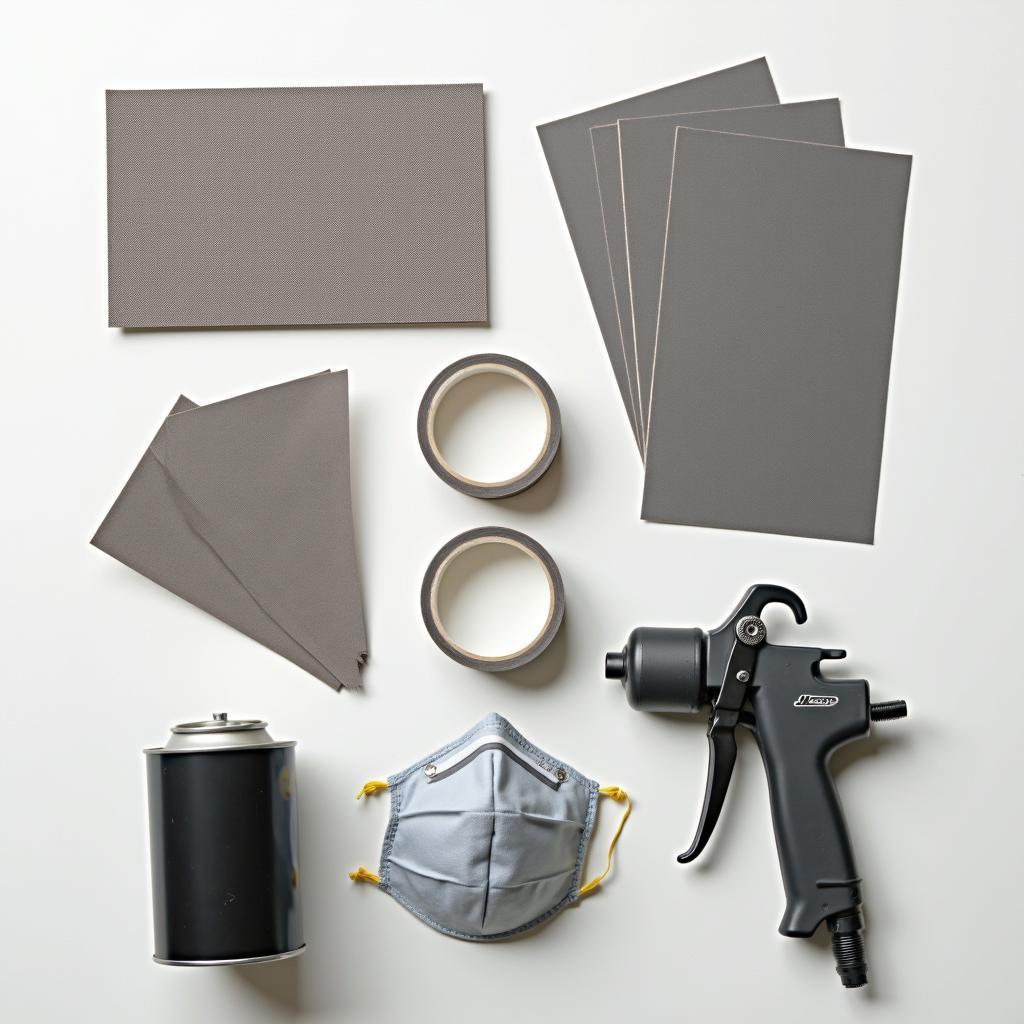 Car Paint Repair Materials
Car Paint Repair Materials
3. Prepare the Area:
Thoroughly wash and dry the vehicle. Mask off the area surrounding the mismatch with masking tape and paper to protect the surrounding paintwork.
4. Sand the Mismatched Area:
Start with a coarser grit sandpaper (e.g., 400-grit) to feather out the edges of the mismatched paint. Gradually move to finer grits (e.g., 600-grit, 800-grit) to create a smooth and even surface for the new paint to adhere to.
5. Prime the Sanded Area (If Necessary):
If you’ve sanded down to the bare metal, apply a thin coat of automotive primer to the area. Primer promotes paint adhesion and helps to create a uniform surface.
6. Apply Color-Matched Paint:
Using a spray gun, apply several thin coats of color-matched car paint to the prepared area. Ensure even coverage and allow each coat to dry completely before applying the next one.
7. Blend the Paint:
If the mismatch is minor, you can blend the new paint into the surrounding area using a blending technique. This involves gradually reducing the paint flow as you move away from the repaired area, creating a seamless transition.
8. Apply Clear Coat:
Once the color coat is dry, apply 2-3 coats of automotive clear coat to protect the paint and enhance its gloss. Allow the clear coat to cure completely according to the manufacturer’s instructions.
9. Buff and Polish:
After the clear coat has cured, use a polishing compound and a buffer to remove any imperfections and achieve a smooth, glossy finish.
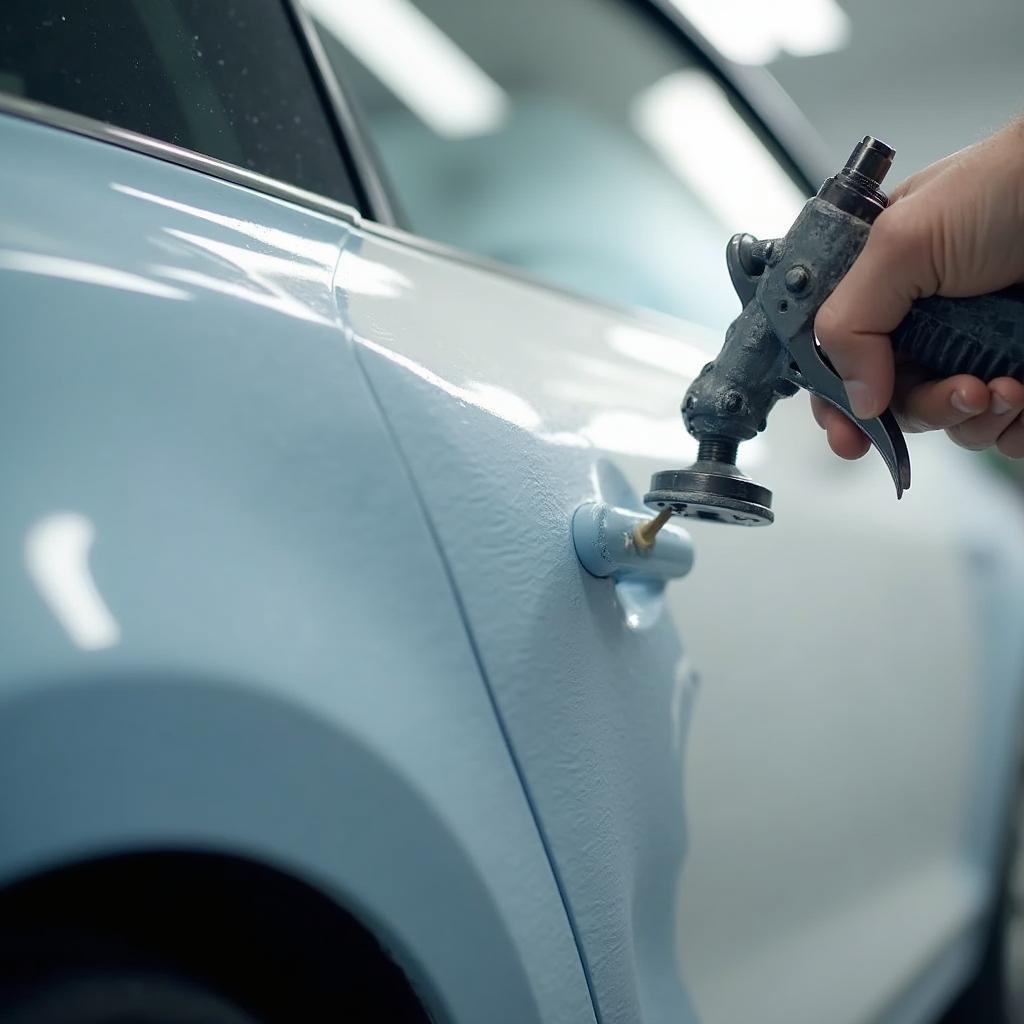 Car Paint Blending Process
Car Paint Blending Process
Expert Insights
John Smith, Senior Automotive Painter at ABC Autobody:
“One of the most common mistakes people make when trying to fix a car paint bad match is not sanding the area properly. It’s crucial to create a smooth and even surface for the new paint to adhere to, otherwise, the mismatch will still be visible.”
Tips for Preventing Car Paint Mismatches
- Use High-Quality Paint: Opting for reputable brands and ensuring the paint is correctly mixed can significantly reduce the risk of mismatches.
- Address Fading Early On: If you notice your car’s paint starting to fade, consider a professional polish or repainting to prevent more significant mismatches in the future.
- Seek Professional Help: For significant color differences or if you’re unsure about the repair process, it’s best to consult with a professional auto body shop to ensure a flawless finish.
Conclusion
Repairing a car paint bad match requires patience, attention to detail, and the right techniques. By following this comprehensive guide, you can effectively address this common issue and restore your car’s paintwork to its former glory. Remember that using high-quality materials, practicing proper application techniques, and seeking professional help when needed can make all the difference in achieving a seamless and professional-looking finish.
FAQs about Car Paint Bad Match
1. Can I fix a car paint bad match myself?
While minor mismatches can be addressed with DIY techniques, it’s essential to have some experience with car painting. For significant color differences, seeking professional help is recommended.
2. How much does it cost to fix a car paint bad match?
The cost varies depending on the severity of the mismatch, the car model, and the labor rates in your area. Minor repairs might cost a few hundred dollars, while repainting an entire panel could range from several hundred to over a thousand dollars.
how much does it cost for car paint repair
3. What happens if I don’t fix a car paint bad match?
Besides affecting your car’s aesthetics, a paint mismatch can lower its resale value. Over time, the mismatched area might become more noticeable as the surrounding paint continues to fade.
4. How can I prevent car paint fading in the future?
Regular washing, waxing, and parking your car in shaded areas can help minimize sun damage and prevent premature fading.
5. Can I use touch-up paint to fix a car paint bad match?
Touch-up paint is best suited for small chips and scratches. Using it to fix a larger area with a noticeable color difference is unlikely to yield satisfactory results.
car paint crack repair cost bumper
Common Car Paint Bad Match Scenarios
Here are some common scenarios where car paint bad matches occur:
- Repaired Bumper Doesn’t Match the Faded Hood: The newly painted bumper might look too bright compared to the rest of the car.
- Door Replaced After an Accident: The replacement door, even if painted with the correct color code, might not perfectly match the original paint due to fading.
- DIY Touch-Up Job Gone Wrong: Using mismatched touch-up paint or applying it incorrectly can create a noticeable blemish.
cost to repair car paint scratches
Exploring Further Car Repair Solutions:
If you’re experiencing car paint mismatches or any other car repair issues, don’t hesitate to reach out for expert assistance. Contact us through WhatsApp at +1(641)206-8880 or email us at [email protected]. Our dedicated team is available 24/7 to provide guidance and support.

